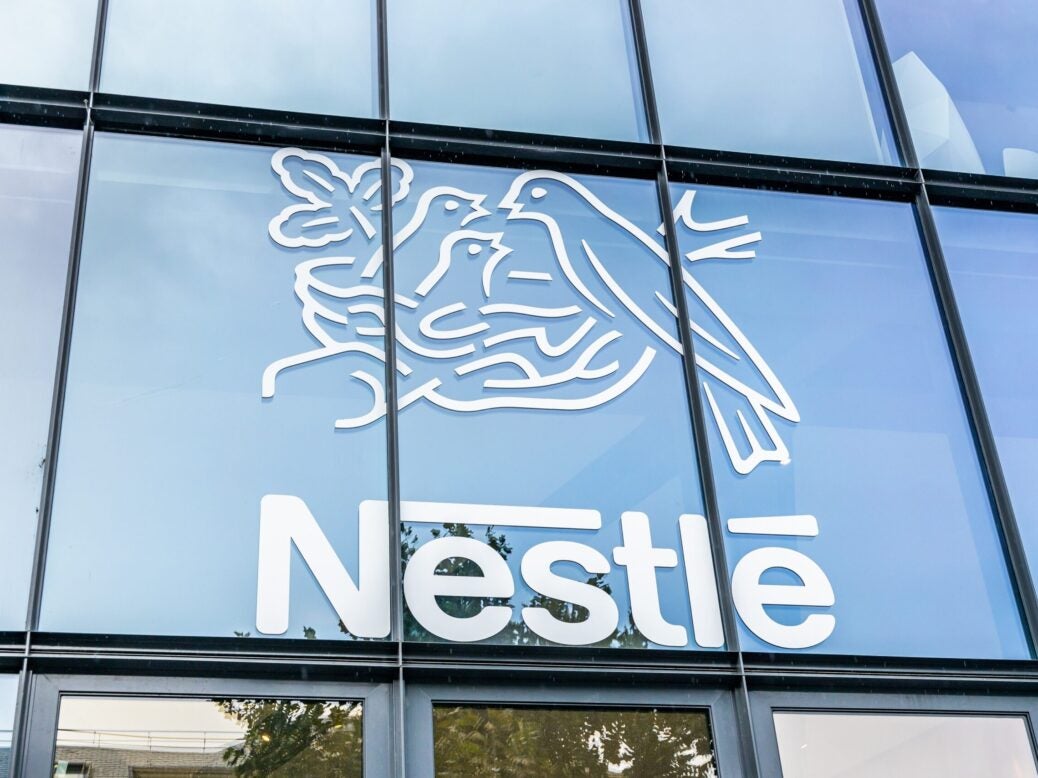
Nestlé is lining up further price increases as part of moves by the world’s largest food maker to offset pressure on costs.
CFO François-Xavier Roger said the Swiss giant intends “to go even a little bit further” to up prices to mitigate against higher costs in areas including raw materials, energy and labour.
The company, home to brands from Maggi noodles to Nescafé coffee, upped its prices by 6.5% in the first half of 2022, which contributed to a 9.2% increase in reported sales and to growth of 8.1% on an organic basis. The group said its “real internal growth”, or RIG, which excludes the impact of M&A and pricing actions, was 1.7%.
Nestlé’s first-half sales led the Swiss giant to lift its forecast for its annual organic growth, which it now expects to rise by 7-8%, up from its April forecast for “around 5%”.
However, the KitKat maker trimmed its forecast for a key profitability metric amid what it calls “unprecedented cost inflation”. Nestlé sees its “underlying trading operating profit margin” coming in it at “around 17%” in 2022. When the company announced its first-quarter sales in April, it predicted growth against that metric of between 17% and 17.5%.
In the first half of the year, Nestlé’s price hikes took in markets around the world. However, in regions including North America, Latin America and Europe, the company said the increases were not enough to offset “significant inflation”.
Speaking to analysts after Nestlé reported its first-half results, the company said it had started to see input cost pressure in some areas ease but underlined that was a uniform picture.
Roger said Nestlé’s cost inflation in the opening six months of the year was 14% of the company’s cost of goods sold and added: “For H2, we expect to have a relatively similar increase in terms of input cost inflation as a percentage of our cost of goods. It may be marginally higher but pretty similar, especially so that we have seen things plateauing and normalising. We start seeing a few agricultural commodities pricings going south but, on the other hand, we have energy prices moving up. [However], it starts to plateau to a certain extent, barring any changes in the coming weeks and months.”
Mark Schneider, Nestlé’s CEO, was coy on where and on which products the company would look to increase prices but said the group was prepared to move again.
“It’s not in our best interest to pinpoint now exactly which category and which geography is going to see price increases but clearly some repairing needs to be done,” he said. “The gross margin is still quite a bit down from what it was at the half-year point last year.”
Nestlé on how consumers are reacting to price increases
FMCG companies will be closely watching the impact their moves to increase prices are having on consumer demand. Schneider told analysts “demand elasticity is still quite limited and moderate in light of the pricing action we had to take”. Roger sought to explain how the elasticity on Nestlé’s products could differ by category and by pricing tier.
“Whenever we are clear leaders like in pet care, in coffee and so forth, we don’t really see elasticity,” he insisted. “Whenever we have a less leading position, or whenever we are in categories – because it is more a function of categories, categories where price sensitiveness is stronger like dairy – we may see in the future, a little bit more elasticity. But, once again, less a function of channel more a function of categories and a leadership position.”
He added: “On more premium, it’s traditionally a category where you have limited elasticity, which should be the case. Even if we look historically at previous crises, there is little elasticity. The same applies to a certain extent to affordability because these are essential products. Probably where we may see a little bit more elasticity is more in the mainstream segment.”
Looking further ahead to 2023, Schneider – who said Nestlé has acted “responsibly” with its price increases – said the group was expecting to see rising costs in another area. “The labour component, at least when it comes to key economies in western Europe and North America, I think it’s a pretty sure thing that we have to prepare for higher labour cost levels there,” he reflected.
“And you do that, obviously, with automation wherever you can and squeezing efficiencies out of the system but, at the end of the day, it may also then result in some pricing at that time, but we’ll revisit that as we look at ‘23.”
Nestlé’s management was asked whether it thought the food inflation faced by consumers worldwide would hit disposable incomes. Roger said that was a possibility but said the food industry was likely to be more protected than other sectors.
“On global food inflation, could it hit disposable income? It could, potentially but I think that, if we enter into a recession with further economic and financial constraints for consumer, we are probably in an industry, food, which will be hit last,” he said.
“And even if we look at the last example, which is the 2008 crisis, I mean we continued to grow. We continued to have a positive RIG. Where we suffered a little bit more is in mix because there is always a risk of down trading, which is something that we are monitoring very closely. And so far, we have not seen clear evidence of it, but once again, something we are monitoring very closely.”



